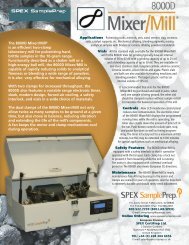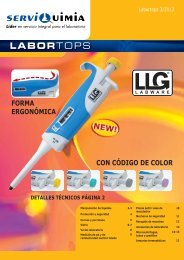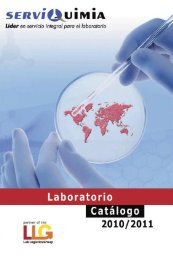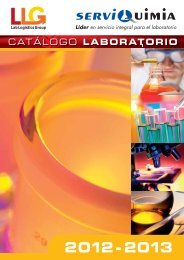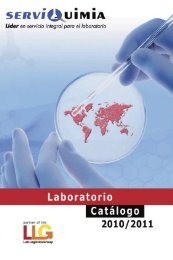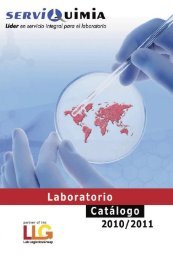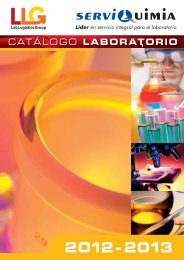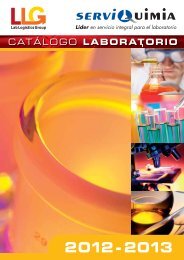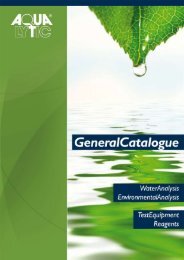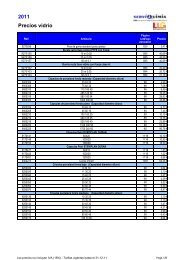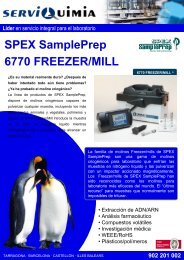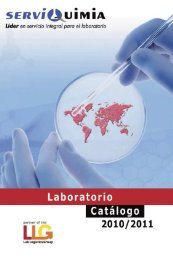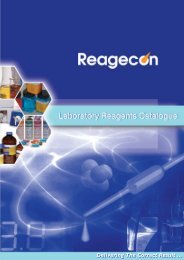pdf, 3101 Kbytes
pdf, 3101 Kbytes
pdf, 3101 Kbytes
You also want an ePaper? Increase the reach of your titles
YUMPU automatically turns print PDFs into web optimized ePapers that Google loves.
Turbidity Meters<br />
Turbidity meters<br />
Turbidity Measurement<br />
The term "turbidity” is used to describe the cloudy or milky appearance<br />
of liquid or solid media such as water (drinking, mineral,<br />
bathing or waste water), beverages (beer, wine or soft<br />
drinks) or window glass (translucent glass).<br />
In physical terms, turbidity is due to particles of varying sizes<br />
scattering or absorbing light, giving the medium in question a<br />
cloudy appearance.<br />
This turbidity is caused by suspended particles such as sludge,<br />
limestone, yeast or microorganisms.<br />
In former days, researchers attempted to use visual systems as<br />
a means of turbidity measurement. "Jackson Turbidity Units"<br />
(JTU), for example, were based on a defined volume of dissolved<br />
silicic acid from diatomaceous earth in water. Turbidity<br />
was measured using a candle turbidity meter, apparatus comprising<br />
a candle and a glass vessel that permitted visual comparison<br />
of the suspension with the silicic acid solution.<br />
Today, it is still common practice to test water samples using a<br />
white "sight disc” made of cast bronze; the disc is lowered into<br />
the water until it can no longer be seen. The turbidity is then<br />
calculated on the basis of immersion depth.<br />
Today, the phenomenon of turbidity is measured using optoelectronic<br />
meters. An artificial light source emits a known intensity<br />
of light through a sample. The suspended particles scatter<br />
or absorb the light. The scattered light is then recorded on a<br />
photodetector.<br />
Nowadays, the scattered light is generally<br />
measured at an angle of 90°. This measurement principle is<br />
known as nephelometry. A nephelometer is therefore a turbidity<br />
meter that measures scattered light at an angle of 90°. The<br />
results are shown in NTU (Nephelometric Turbidity Unit).<br />
To obtain defined, reproducible results, turbidity meters are<br />
calibrated and adjusted using formazine solutions (reference<br />
standard).<br />
These meters display their results in FNUs<br />
(Formazine Nephelometric Units).<br />
The result measured by a meter operating on the transmitted<br />
light principle is shown in FAUs (Formazine Attenuation Units).<br />
There are two standards for turbidity measurement that are<br />
widely accepted at an international level.<br />
EN ISO 7027, "Water quality, determination of turbidity” outlines<br />
all the possible methods for turbidity measurement.<br />
All optoelectronic methods require an infrared light source.<br />
This also permits testing of coloured samples.<br />
In its method 180.1, "Determination of turbidity by nephelometry",<br />
the EPA in the US<br />
describes solely the nephelometric (scatter light) method<br />
using a so-called white light source (tungsten halogen lamp).<br />
The results measured by different units using the two aforementioned<br />
methods cannot be compared.<br />
62<br />
Regularly updated information: www.aqualytic.com General Catalogue January 2010



